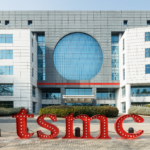ASIA ELECTRONICS INDUSTRYYOUR WINDOW TO SMART MANUFACTURING
Intel Unveils New Advances in Novel Transistor Scaling
Intel has unveiled technical breakthroughs that maintain a rich pipeline of innovations for the company’s future process roadmap. Most importantly, this underscores the continuation and evolution of Moore’s Law.
At the 2023 IEEE International Electron Devices Meeting (IEDM), Intel researchers showcased advancements in 3D stacked CMOS transistors. Moreover, combined with backside power and direct backside contacts.
The company also reported on scaling paths for recent R&D breakthroughs for backside power delivery, such as backside contacts. Furthermore, it was the first to demonstrate successful large-scale 3D monolithic integration of silicon transistors. Particularly, with gallium nitride (GaN) transistors on the same 300mm wafer, rather than on package.

“As we enter the Angstrom Era and look beyond five nodes in four years, continued innovation is more critical than ever. At IEDM 2023, Intel showcases its progress with research advancements that fuel Moore’s Law, underscoring our ability to bring leading-edge technologies that enable further scaling and efficient power delivery for the next generation of mobile computing,” said Sanjay Natarajan, Intel senior vice president and general manager of Components Research.
Importance of Scaling
Transistor scaling and backside power are key to helping meet the exponentially increasing demand for more powerful computing. Year after year, Intel meets this computing demand. That is, demonstrating innovations will continue to fuel the semiconductor industry and remain the cornerstone of Moore’s Law.
Intel’s Components Research group consistently pushes the boundaries of engineering by stacking transistors, taking backside power to the next level to enable more transistor scaling and improved performance. Furthermore, it demonstrates that transistors made of different materials can be integrated on the same wafer.
Recent process technology roadmap announcements highlighting the company’s innovation in continued scaling. Particularly, the PowerVia backside power, glass substrates for advanced packaging, and Foveros Direct. All originated in Components Research and are expected to be in production this decade.
Development Processes
At IEDM 2023, Components Research showed its commitment to innovating new ways of putting more transistors on silicon while achieving higher performance. Researchers have identified key R&D areas necessary to continue scaling by efficiently stacking transistors.
Combined with backside power and backside contacts, these will be major steps forward in transistor architecture technology. Along with improving backside power delivery and employing novel 2D channel materials, Intel is working to extend Moore’s Law to a trillion transistors on a package by 2030.
Intel delivers industry-first, breakthrough 3D stacked CMOS transistors combined with backside power and backside contact:
- Intel’s latest transistor research presented at IEDM 2023 shows an industry first: the ability to vertically stack complementary field effect transistors (CFET) at a scaled gate pitch down to 60nm.
- This allows area efficiency and performance benefits by stacking transistors. Moreover, it combines with backside power and direct backside contacts. Thus, it underscores Intel’s leadership in gate-all-around transistors and showcases the company’s ability to innovate beyond RibbonFET.
Meanwhile, Intel goes beyond five nodes in four years and identifies key R&D areas needed to continue transistor scaling with backside power delivery:
- Intel’s PowerVia will be manufacturing-ready in 2024, which will be the first implementation of backside power delivery. At IEDM 2023, Components Research identified paths to extend and scale backside power delivery beyond PowerVia. In addition, the key process advances required to enable them. In addition, this work also highlighted the use of backside contacts and other novel vertical interconnects to enable area-efficient device stacking.
Other Breakthroughs
Furthermore, Intel is first to successfully integrate silicon transistors with GaN transistors on the same 300mm wafer and demonstrate it performs well:
- At IEDM 2022, Intel focused on performance enhancements and building a viable path to 300mm GaN-on-silicon wafers. This year, the company is making advancements in the process integration of silicon and GaN.
- Hence, Intel has now successfully demonstrated a high-performance, large-scale integrated circuit solution – called “DrGaN” – for power delivery. Intel researchers are the first to show that this technology performs well and can potentially enable power delivery solutions. For that reason, it can keep pace with the power density and efficiency demands of future computing.
Intel advances R&D in the 2D transistor space for future Moore’s Law scaling:
- Transition metal dichalcogenide (TMD) 2D channel materials offer a unique opportunity for scaled transistor physical gate length below 10nm.
- In addition, Intel will demonstrate prototypes of high-mobility TMD transistors for both NMOS (n-channel metal oxide semiconductor) and PMOS (p-channel metal oxide semiconductor), the key components of CMOS. Intel will also present the world’s first gate-all-around (GAA) 2D TMD PMOS transistor, and the world’s first2D PMOS transistor fabricated on a 300mm wafer.




